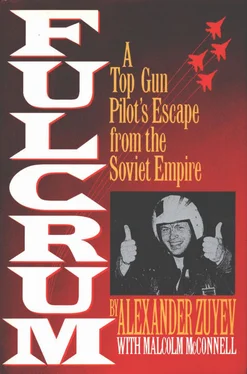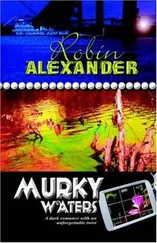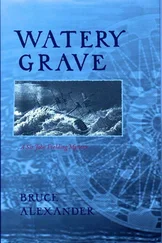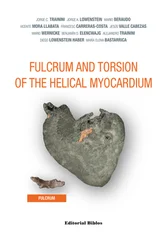I was free of that threat, but had to quickly overcome another. Flying at transonic speed so close to the water was much more dangerous than over land. There were no trees or telegraph poles to give definition to the flat, plum-blue surface of the sea. And the distant horizon was masked in evaporation haze. This was like flying into a constricting tunnel of blue glass. I suddenly lost orientation and felt that the plane was sliding inexorably onto its right wing, even though the stick was well centered.
But again I refused to panic. Instead of looking ahead at the flowing sheet of the surface, I rolled my head right and left to stare past the wingtips. The plane was flying straight and level. Off the left wing I saw a darker jumble on the hazy southern horizon. That would be Batumi, the port close to the Soviet-Turkish frontier. The reinforced PVO brigade there had every conceivable air-defense missile and gun in the Soviet arsenal, Dvinas, Nevas, Rombs, and Kubes. But my radar-warning receiver remained dark. Either the Batumi brigade had not yet been alerted, or I was safely below their radar horizon.
I craned my neck to ease the cold cramp spreading from my right shoulder. The adrenaline had flushed through my system and I felt suddenly sick, spongy inside. I clenched my teeth and breathed as deeply as I could. There was still over a hundred miles of this dead flat sea to traverse before the Turkish coast.
Then I was instantly erect in the seat, throbbing with fresh adrenaline. The concentric circles of yellow and green warning lights on my SPO-15 display flashed again, this time from the right rear quadrant. I was being probed by a radar from behind. A quick calculation revealed that the only possible radar back there had to be airborne. Either it was Petrukhin, or the PVO had managed to scramble Su-27s from Gudauta. A scan of my cockpit mirrors showed nothing, just the misty blue morning behind me. Looking back was a waste of time. If they launched on me, it would be from a distance of at least six miles.
Again I juggled the stick in my right hand to trip the chaff dispenser with my left thumb. I had no choice but to slide even lower toward the gentle blue swell. Down here, one false move, one slip with the control stick, would slam me into the sea. But I had to stay this low for several minutes longer, protected by the cloud of chaff from the radar lock-on of an Alamo. I had no choice. At least death would be fast in either case.
The haze had formed a circle now, obliterating the horizon ahead and behind. All I could do was hang on, waiting for the Turkish mountains to appear ahead. Or for a missile to slam into my tail pipes.
The radar receiver lights flashed briefly once more, then went dark. A minute passed. My chaff supply was exhausted. But the threat did not return.
Now I felt sick and dizzy, a sour metallic taste in my dry mouth. I knew I might pass out at any moment. Better to fight it than surrender. I eased the stick back and let the plane float up to 1,500 feet. At least the radar altimeter was working. At this altitude I would be visible to the radars of any Navy ships out there to the right, especially to the new precision search radars on the Udaloy class destroyers based out of Poti.
But I had to take this risk. Before I passed out or grew even weaker, I had to strap into the ejection seat. I might be too groggy to land this airplane, and I had no intention of dying because I hadn’t the strength to strap in properly.
But this proved almost impossible. My right arm was useless now, and I needed my left hand to fly. In a series of jerky motions that sometimes sent the plane lurching hard right or left, I managed to free the twisted straps and buckles behind me. Then I discovered I could grip the stick loosely with my knees and use my left hand to reach behind and pull the safety pins from the arm restraints. Freeing the pin from the seat igniter system was the hardest task of all. Normally the mechanic used two hands to twist and jerk the locking mechanism. I had only one, and the pin was located high and behind my headrest. If I strained to reach it, my knees slipped off the stick and the plane careened violently through the sky. Even at an altitude of 1,500 feet, I was dangerously low at this speed. So I climbed another 600 feet, pushed myself up on my haunches, and somehow fought the pin free.
Time seemed to stop. I was no longer just flying this fighter, I was battling for my life. Then I looked up to find I had clasped the last buckle of the harness in place. I slid the safety pin free of the ejection-seat firing handle between my knees and dropped it on the deck with the others.
I found myself smiling. In those minutes I had fought the ejection harness and the pins, I had passed into Turkish airspace. A brown hump loomed ahead in the mist and slowly gained definition. The coast of Turkey, the mountainous headland of Fener Burnu. I had made a perfect landfall after flying almost one hundred miles right down on the waves. And I was strapped into a fully armed ejection seat.
Whatever happened now, at least I would not die in this airplane.
It was safe to climb even higher. I eased the throttles back to eighty percent and leveled off at 3,000 feet. The tan and green bulk of Turkey rose steeply from the sea, sliced by geometrically flat bands of milk-white mist. Below, a fishing boat cut a widening V-wake through the calm water. This was the most beautiful sight I had ever seen. I stared at those wild brown mountains as they swelled toward me.
Then I remembered what that landfall meant. It was my primary navigation point. Trabzon lay to the left, fifteen miles east of the headland. And the city’s airport lay about another mile further east, just past the port. At least according to the detailed VVS navigation chart I had memorized then burnt with my other papers in the soccer field.
I rolled slowly left and scanned the coast. There was a town, but it seemed too small to be the port of Trabzon. Those low stone buildings and the wooden wharf had to be Akcaabat, a little fishing port on my chart. A band of snow-white mist lifted from the coast and I suddenly saw the modern city of Trabzon marching up the bluff from the sea. Trabzon was sliced by steep ravines. The winding streets were rivers of shade trees leading down to the port. I saw large warehouses, a long concrete commercial pier, and an overlapping brown breakwater. There was the tall lighthouse that had been marked on my chart. Behind the city, older houses with orange tile roofs spread into pale green tea groves. I slid the throttles back and eased down the nose.
Where was the airport? The highway leading east of the city seemed to widen into a long gray motorway. No. That highway was the airport’s single runway. It was right on the edge of the water, perched there like an aircraft carrier. My nose was lined up perfectly. I decided to skip a normal landing circuit and fly a straight-in approach. But I made sure to check the airspace for traffic. There was nothing in sight.
Steadying the stick with my knees, I dumped landing gear, set the slats, then the flaps for landing, and began to verify my panel. But I had no proper instruments, just the radar altimeter and the angle-of-attack gauge, a circular dial just left of the HUD.
That would have to guide me through the approach. I set up at an initial AOA of ten degrees, with the throttles still at eighty percent. With no airspeed indicator, I had to judge this well. I did not want to overshoot the threshold at the edge of the sea because I had no idea how long the runway was. But I did not want to undershoot either.
The plane came whistling down, “steady as a train,” as Tveretin used to say. Now I lifted the nose to twelve degrees AOA and used my rudders gently to keep the nose aligned with the long gray runway. The gravelly white beach sailed past. I caught a glimpse of painted lines. I was over the threshold. The main gear touched smoothly, with only a slight squeal. And I was surprised by the gentle bounce of the nosewheel’s contact. Instinctively I tripped my tan drag chute and watched the canopy blossom in my mirror.
Читать дальше










